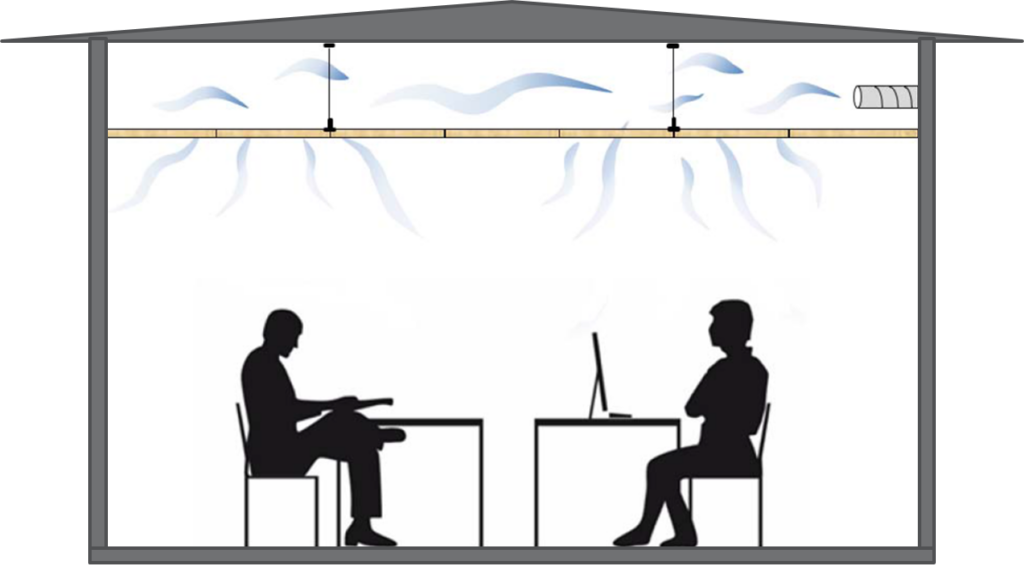
Designing a holistic indoor environment can be challenging. It will often entail several compromises between quality of different aspects of well-being. It is extremely rare that a solution comes along that both enhances indoor comfort, reduces complexity of design while also saving money and lowering emissions. It definitely is extremely rare, but it happens. Diffuse ceiling ventilation is one such solution. It exists in the intersection between ventilation and room acoustics
In this post we will give you a short introduction to diffuse ceiling ventilation as well as all the sources you need to educate yourself or colleagues about this technology.

Quick facts about ventilation:
- Across Denmark, France, Italy, Norway and Sweden, researchers found that indoor-air quality in 66% of classrooms fell short of healthy standards.[1]
- Increased ventilation rates is shown to reduce re-infection during hospital admissions. European Centre for Disease Prevention Estimates these mishaps having a financial impact of 7 trillion €.[2]
- Performance in office work is shown to increase with 1-3 % per every 10 l/s per person increase in ventilation rate, falling gradually as airflow increases.[3]
- Respiratory aerosols account for around 90% of COVID-19 transmission.[4]
”Innovation is required to address the shortfalls of the current ventilation systems”[5]
– Prof. Philomena Bluyssen, Delft University
How it works – Acoustics and ventilation in one solution
Diffuse ventilation works through a supply of air being established behind the ceiling tiles (plenum) so that a rather gentle overpressure is created across the entire ceiling surface. Here, the fresh air constantly trickles through at a low pressure, primarily between the ceiling tiles.
Diffuse ceiling ventilation also allows for quite high ventilation rates compared to traditional ventilation solutions without causing any discomfort. The pressure is so low that no form of ventilation noise can be heard and is so evenly distributed that the room is covered with fresh air all the way into the corners. This form of ventilation system can remove large volumes of heat without any compromise with comfort in the form of draughts or great temperature differences.
Fully active both in terms of acoustic absorption and ventilation
As diffuse ventilation does not need air supply fixtures in the ceiling, the full acoustic effect is maintained across the entire ceiling surface. In other words, almost the entire ceiling surface is absorbing sound while also supplying fresh air – The ceiling is completely active both in terms of acoustics and ventilation.
By using acoustic tiles of mineral wool, there is there is no need to install any other types of tiles or acoustic materials over the ceiling to create a good acoustic outcome. Similar, if a ceiling of this type already exists in a room, it will often be possible to implement diffuse ceiling ventilation without adding new types of materials. All that is needed is a few acoustic tiles to replace tiles previously used for ventilation inlets as well as some tests, clean-up and not least some engineering knowhow to make sure the ceiling and ventilation system is fit for this solution.
Be aware that other circumstances/performance parameters apply for perforated ceilings and other ceiling solutions requiring sound absorbing materials above the ceiling tiles.
Would you like to know more? – Direct links
Extensive academic design guide on how to implement diffuse ceiling ventilation
REHVA journal article on relationship between COVID infection and ventilation rates
Sources:
[1] https://www.economist.com/leaders/2021/05/29/it-is-time-to-clean-up-the-air-in-buildings
[2] https://www.sciencedaily.com/releases/2019/03/190328102652.htm



